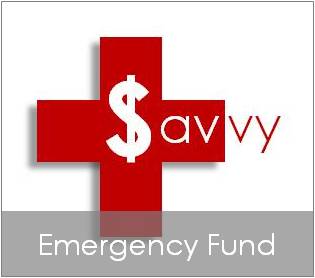Over the course of adulthood, particularly the older you get, you are likely to open multiple financial related accounts (e.g. checking, savings, CDs, insurance policies, etc.). The more accounts you open over a lifetime increases the odds that you may lose ‘contact’ at one time or another for one or more accounts.
This is particularly true if you have moved frequently. Over the course of my 21-year Army career I moved – changed duty stations – 12 times. While I have had the same checking account for the last 14 years, I probably had six or seven different savings/checking accounts prior to that.
If you believe you have some money out there from an account you lost contact with, simply forgot about or weren’t aware of to start with, there is a means by which you can find, and recover, your money. Missing Money is a site that works with state and provincial governments to safeguard and return your lost funds. Endorsed by the National Association of Unclaimed Property Administrators (NAUPA) and the participating states and provinces, the website assists individuals with thoroughly searching all participating states to find your family’s missing, lost or unclaimed property, money and assets.
Common types of unclaimed property include: bank accounts and safe deposit box contents, stocks, mutual funds, bonds, dividends, uncashed checks and wages, insurance policies, CD’s, trust funds, utility deposits and escrow accounts.
Returning from a recent business trip to Germany, sitting in the Houston Airport – and a long layover – I checked out the site to see if the Mrs. and I had any money floating around out there. No luck. However, I did find that three family members had a total of nine instances between them where they had unclaimed money. The site only shows if a given account is less than or more than $100. If you believe you are the person associated with a given account, links are provided to start the process of claiming your money. If you are able to catch up with some of your lost money, the question becomes, “What should I do with money I didn’t know I had or forgot about?”
Instead of buying something you don’t really need or treating the family out to a gourmet meal somewhere, I have three suggestions: apply it toward any debt you may have, establish or apply it to an existing emergency fund or contribute to an IRA.
Service your Debt: There isn’t a lot that can be said about debt. This scourge – discussed here, here and here – can weigh on you mentally, physically and financially. The sooner you free yourself from the burden of servicing debt, the more you can focus on managing your retirement plan.
 Contribute to your Emergency Fund: As SavvyReaders know, an emergency fund is a cash account that is used only in the event of an emergency, to fill critical financial gaps, or meet unexpected expenses. It is immediate access to cash that allows you to take care of unforeseen circumstances without impacting the money you have committed to saving and investing. With regards to the question of how much should be maintained in an emergency fund, there are various schools of thought. While some suggest one year’s living expenses, others suggest three, six, or nine months of income, while others might suggest something else entirely.
Contribute to your Emergency Fund: As SavvyReaders know, an emergency fund is a cash account that is used only in the event of an emergency, to fill critical financial gaps, or meet unexpected expenses. It is immediate access to cash that allows you to take care of unforeseen circumstances without impacting the money you have committed to saving and investing. With regards to the question of how much should be maintained in an emergency fund, there are various schools of thought. While some suggest one year’s living expenses, others suggest three, six, or nine months of income, while others might suggest something else entirely.
In most cases, your marital status (theoretically single people should have more as they are reliant on a single income); the number of children in the household, and the level of job security are probably the primary factors. Other factors might be the age of your appliances, the age of your primary vehicle, as well as the age of other items in your household that might need repair or replacement. Ultimately, the amount will vary for everyone as the factors that impact their lives will be entirely different. However, I recommend three months living expenses as a minimum for your emergency fund.
Contribute to your IRA: A great savings vehicle, particularly for those that do not have access to a 401(k) type defined contribution plan. If you haven’t maxed out contributions for this year, $5,500 if you are 49 years of age or younger, $6,500 if you are 50 or older, this is a great way to put your new-found money to use. Note that the contribution limits for 2015, as recently announced by the IRA, have not changed.
If you recover some money from your past, put it to use today to serve your future.



